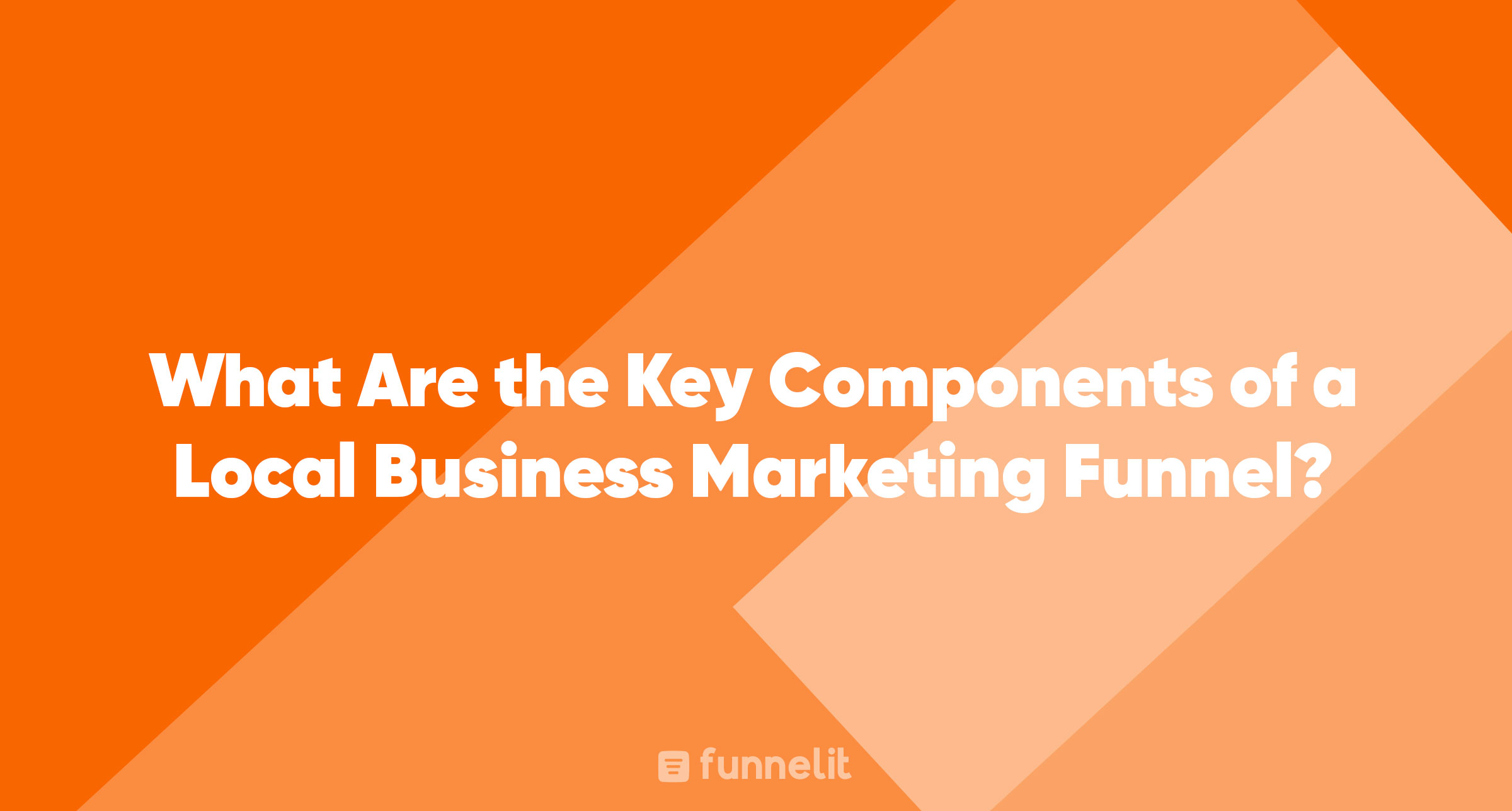Marketing funnels play a crucial role in guiding potential customers through the buyer's journey, from initial awareness to making a purchase. For local businesses, having an effective marketing funnel is essential for attracting and converting local customers. In this article, we will explore the key components of a local business marketing funnel and how they can help drive success.
Understanding the Local Business Marketing Funnel
A marketing funnel is a model that represents the various stages a customer goes through before making a purchase. In the context of local businesses, the marketing funnel is tailored to target customers within a specific geographic area. The goal is to attract local customers and guide them through the funnel to become paying customers.
The key components of a local business marketing funnel include:
1. Awareness Stage
At the top of the funnel is the awareness stage, where potential customers become aware of your business and its offerings. This is where you cast a wide net to capture the attention of local customers. Strategies for this stage include:
- Local SEO: Optimize your website and online presence to appear in local search results.
- Online directories: List your business in local directories to increase visibility.
- Local advertising: Use digital and traditional advertising methods to reach a local audience.
- Content marketing: Create valuable and informative content that appeals to local customers.
2. Interest and Consideration Stage
Once potential customers are aware of your business, they move into the interest and consideration stage. At this stage, they are actively considering your offerings and comparing them to competitors. Strategies for this stage include:
- Engaging content: Provide detailed information about your products or services to help potential customers make informed decisions.
- Customer testimonials: Share testimonials and reviews from satisfied local customers to build trust and credibility.
- Local events and partnerships: Participate in local events or collaborate with other local businesses to increase exposure and credibility.
3. Conversion Stage
The conversion stage is where potential customers make the decision to purchase from your business. Strategies for this stage include:
- Clear calls to action: Make it easy for customers to take the next step, such as making a purchase or contacting your business.
- Special offers and promotions: Offer exclusive discounts or promotions to incentivize customers to choose your business over competitors.
- Seamless purchasing process: Ensure that the purchasing process is smooth and user-friendly, whether it's through your website or in-store.
4. Customer Retention and Advocacy
Once a customer has made a purchase, it's important to focus on retaining their loyalty and turning them into brand advocates. Strategies for this stage include:
- Excellent customer service: Provide exceptional customer service to ensure customer satisfaction and encourage repeat business.
- Loyalty programs: Offer rewards or incentives for repeat purchases to encourage customer loyalty.
- Referral programs: Encourage satisfied customers to refer their friends and family to your business.
Implementing a Local Business Marketing Funnel
To implement a successful marketing funnel for your local business, it's important to follow a systematic approach. Here are the steps to develop and implement your local business marketing funnel:
Step 1: Define Your Target Audience
Identify your target audience based on demographics, location, and interests. This will help you tailor your marketing efforts to reach the right people.
Step 2: Create Engaging Content
Develop content that resonates with your target audience at each stage of the funnel. This can include blog posts, videos, social media content, and more.
Step 3: Optimize Your Online Presence
Ensure that your website is optimized for local search and that your business information is consistent across online directories and platforms.
Step 4: Drive Traffic to Your Website
Use a combination of organic and paid marketing strategies to drive traffic to your website. This can include SEO, social media advertising, and local partnerships.
Step 5: Capture Leads
Implement lead capture methods such as email opt-ins, forms, or chatbots to collect contact information from potential customers.
Step 6: Nurture Leads
Develop a lead nurturing strategy to engage with potential customers and guide them through the funnel. This can include email marketing, personalized content, and targeted offers.
Step 7: Convert Leads into Customers
Optimize your conversion process to make it easy for leads to become paying customers. This can involve clear calls to action, simplified purchasing processes, and special promotions.
Step 8: Retain and Engage Customers
Focus on customer retention by providing exceptional customer service, offering loyalty programs, and encouraging repeat business and referrals.
Tracking and Analyzing Your Marketing Funnel
To ensure the success of your marketing funnel, it's important to track and analyze your efforts. Use analytics tools to monitor website traffic, conversion rates, customer behavior, and other relevant metrics. This will help you identify areas for improvement and make data-driven decisions to optimize your funnel.
In conclusion, a well-designed marketing funnel is essential for local businesses to attract, engage, and convert local customers. By understanding the key components of a local business marketing funnel and implementing effective strategies at each stage, you can drive success and establish a strong presence in your local market.
